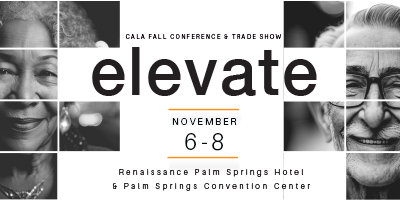CALA encourages communities to provide resources and information to help educate residents and their families regarding advance care planning.
Hospice Regulations
In order to allow residents to stay in Assisted Living communities after they opt for hospice care, or admit a resident already receiving hospice care, providers must have a hospice waiver in place from CCLD (Sections 87632 and 87633 ). In addition, regulations require additional staff training and documentation.
Hospice regulations were updated in July, 2015 to reflect current law regarding hospice care in RCFEs, along with other changes to departmental policies. These updates include the following changes:
- Residents already receiving hospice care may be admitted to RCFEs.
- The need for individual exceptions when a resident is receiving hospice care was eliminated. Instead, the care of prohibited conditions, including total care, must instead be addressed in the hospice care waiver.
- Hospice can be notified in lieu of 911 under certain conditions.
POLST
In 2008, AB 3000 was passed, recognizing the use of POLST, or Physician’s Order for Life-Sustaining Treatment, in the state of California. This document is a signed doctor’s order designed to lay out what treatments a patient does and does not want in the event they are unable to express these wishes themselves. It follows the patient through all care settings.
For more on the use of POLST and its role in communities, access these resources:
FAQ: POLST in California Assisted Living Communities
Regulatory Reminder: POLST in RCFEs, April 2013 (Members Only)
“Consider, Discuss, Document: The Importance of Advance Care Planning.” CALA News & Views Spring 2013.
Resources & Best Practices
Hospice Care for Residential Care Facilities for the Elderly (RCFE)
CCLD released this guide to help RCFE providers comply with hospice care requirements by summarizing the hospice care procedures licensees are required to follow along with best practice suggestions.
Hospice Checklist
CALA and the California Hospice and Palliative Care Association (CHAPCA) developed this easy-to-use checklist to help providers navigate the requirements of hospice regulations.
CCLD Senior Care Policy Interpretations Prepared for CALA and CHAPCA In Response to Questions Presented at CALA/CHAPCA Conferences – Spring 2009
In order to further clarify requirements for allowing residents who elect hospice to remain in Assisted Living, CCLD released these answers to a list of FAQs submitted by CALA.
CPR in Assisted Living (Members Only)
This document addresses duties and regulations concerning cardiopulmonary resuscitation (CPR), automated external defibrillators (AEDs), and end-of-life choices in Assisted Living.
Other Organizations
California Hospice and Palliative Care Association (CHAPCA)
CHAPCA works to promote and strengthen the delivery of hospice care for terminally ill patients and their families through education and advocacy.
Coalition for Compassionate Care
A statewide partnership promoting high-quality, compassionate end-of-life care for all Californians, the Coalition is working on the distribution and use of POLST in the field while providing additional resources for advanced health care planning.
Other End of Life Options
In 2015, the End-of-Life Option Act was signed in to law. It allows terminally ill adults to request a prescription for self-administered, lethal medication. Since residents of RCFEs will be able to elect this option, CALA has prepared this summary of requirements so that providers can respond to related questions and requests.

